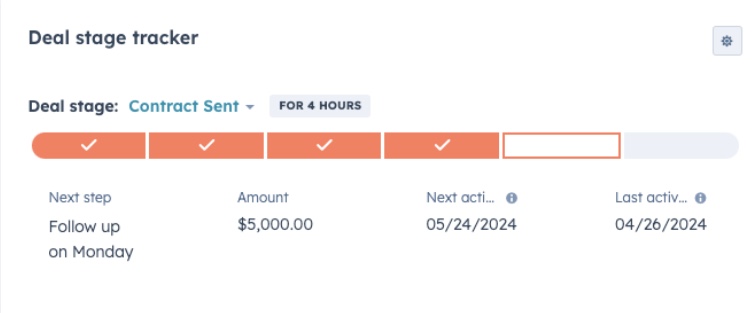Deal & Contact Lifecycle Stage Velocity with HubSpot's New Stage Tracker Card
Alyssa Petty
May 20, 2024 at 2:03 PM
Check out one of HubSpot's new updates!

Unlock the potential of your sales and marketing efforts with HubSpot's latest update on deal and contact lifecycle stage velocity.
The Significance of Tracking Deal & Contact Lifecycle Stage Velocity
Understanding the speed at which deals and contacts move through the sales pipeline is crucial for refining the sales process and boosting conversions. Tracking deal and contact lifecycle velocity provides insights into how quickly prospects become customers, which stages need improvement, and the effectiveness of engagement strategies. This information is essential for forecasting sales, allocating resources, and identifying bottlenecks.
Additionally, this tracking allows sales teams to prioritize deals that are progressing and address stagnant ones, improving productivity and efficiency. For marketing teams, analyzing lifecycle velocity reveals campaign effectiveness and helps tailor content to better nurture leads through the sales funnel.
How HubSpot's New Stage Tracker Card Transforms Sales and Marketing
HubSpot's new Stage Tracker Card revolutionizes sales and marketing by visually tracking how deals and contacts move through the sales pipeline. It provides actionable insights and metrics on stage velocity, allowing teams to quickly assess pipeline health and make data-driven decisions. Users can identify trends, compare sales strategies, and align sales and marketing efforts for maximum impact.
Integrated into HubSpot's CRM, the Stage Tracker Card centralizes relevant information, promoting team collaboration and ensuring everyone works with up-to-date data. This integration streamlines workflows, saves time, and lets teams focus on strategy and customer engagement rather than data management.
Interpreting Data from the Stage Tracker
HubSpot's Stage Tracker Card provides valuable insights, but correct interpretation is key to optimizing performance. By analyzing the average time deals spend in each stage, teams can identify and investigate delays caused by factors like insufficient information, poor follow-up, or product-market misalignment.
The Stage Tracker also allows comparison of deal and contact velocity over different periods, helping teams understand the impact of specific sales and marketing initiatives. Using this data to implement targeted strategies, such as personalized follow-ups or improved qualification criteria, can streamline the sales process and enhance overall performance.
Best Practices for Using Velocity Data to Speed Up Your Pipeline
To effectively use velocity data to speed up the sales pipeline, establish clear goals and benchmarks for each stage. Regularly compare these benchmarks to actual performance to set realistic expectations and identify improvement areas. Sales and marketing teams should collaborate to deliver the right content and messaging at the right time to nurture leads.
Train sales reps in best practices for advancing deals, such as effective communication and proper lead qualification, to increase deal velocity. Continuously refine sales strategies based on insights from the Stage Tracker Card to maintain a competitive edge and ensure an efficient sales pipeline.

